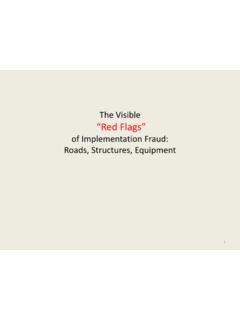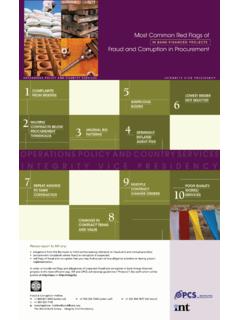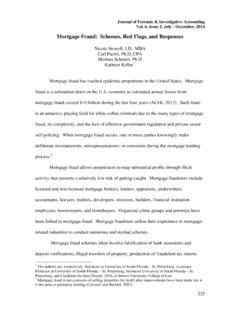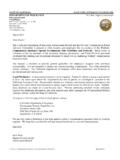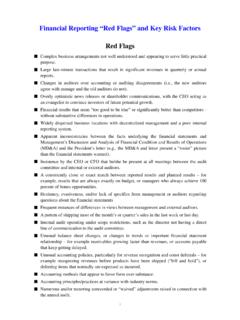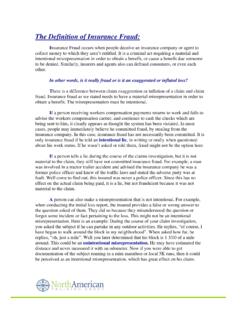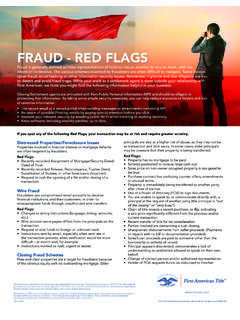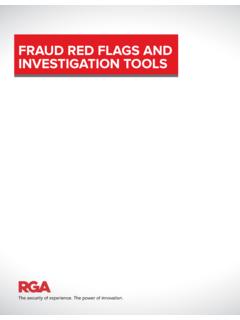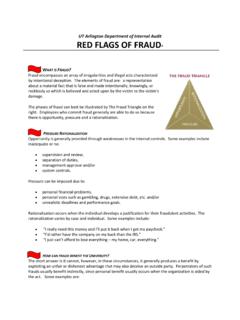Transcription of Understanding Red Flag - globalforensic.in
1 Global Forensic Audit & Investigation 1 | P a g e Understanding Red flag Introduction Why didn t you see it? There was fraud and you missed it. Conducting a should of after a fraud happens may show that red flags were present. If you had only recognized the warning signs, then that loss may not have occurred or been substantially reduced. An indicator of potential problems with a security. Most often used to refer to a stock, a red flag can be any undesirable characteristic that stands out to an analyst. There is no universal standard for identifying red flags ; the method used will depend on the investment methodology being employed.
2 A red flag is anything that marks a stock as undesirable. Because there are many different methods used to pick stocks, there are many different types of red flags . What is a red flag for one person might even be considered desirable by another. For example, low institutional ownership might be a positive for someone looking for undiscovered companies, but a negative for a pension fund that searches out blue chips. Based on a recent survey by the Association of Certified fraud Examiners (ACFE), occupational fraud substantially increases organizational costs. It is a myth that fraud is a big scheme that should have been uncovered sooner and easy to detect.
3 fraud starts small and just gets bigger and bigger, until something becomes noticeably different or unusual. Global Forensic Audit & Investigation 2 | P a g e What is fraud ? Occupational fraud is defined by the ACFE as: The use of one s occupation for personal enrichment through the deliberate misuse or misapplication of the employing organization s resources or assets. fraud encompasses an array of irregularities and illegal acts characterized by intentional deception. The five elements of fraud are: A representation about a material fact, which is false, And made intentionally, knowingly, or recklessly, Which is believed, And acted upon by the victim, To the victim s damage.
4 fraud , like other crime, can best be explained by three factors: 1) A supply of motivated offenders; 2) The availability of suitable targets; 3) The absence of capable guardians or a control system to mind the store. There are four elements that must be present for a person or employee to commit fraud : Opportunity Low chance of getting caught Rationalization in the fraudsters mind, and Justification that results from the rationalization. Facts about fraud According to the ACFE Report to the Nation on Occupational fraud and Abuse, businesses will lose an estimated $652 billion in 2006 due to fraud .
5 The average organization loses 5 percent of revenue to fraud and abuse. In addition, based on the ACFE s survey of more than 1,100 occupational fraud cases, approximately 24 percent of these cases resulted in losses of $1 million or more. Global Forensic Audit & Investigation 3 | P a g e The fraud Triangle The classic model for fraudsters continues to be Other People s Money: A Study in the Social Psychology of Embezzlement. The fraud Triangle is a term, which is used to describe and explain the nature of fraud . I want something I don t have the money for While the specific components of each fraud may differ, the fraud triangle may be defined as this: Opportunity is an open door for solving a non-shareable problem in secret by violating a trust.
6 Opportunity is generally provided through weaknesses in the internal controls. Some examples include inadequate or no: Supervision and review Separation of duties Management approval System controls Opportunity Pressure Rationalization Global Forensic Audit & Investigation 4 | P a g e The opportunity to commit and conceal the fraud is the only element over which the local government has significant control. Pressure may be anything from unrealistic deadlines and performance goals to personal vices such as gambling or drugs. Rationalization is a crucial component of most frauds because most people need to reconcile their behavior with the commonly accepted notions of decency and trust.
7 Some examples include: I really need this money and I ll put it back when I get my paycheck I d rather have the company on my back than the IRS I just can t afford to lose everything my home, car, everything Factors Contributing to fraud Factors contributing to fraud include the following: Poor internal controls Management override of internal controls Collusion between employees Collusion between employees and third parties How is fraud Discovered? Occupational fraud can be detected through a number of different methods. The ACFE s 2006 Survey disclosed that percent of frauds were detected through tips, percent by accident, and percent through internal audits.
8 What is a Red flag ? A red flag is a set of circumstances that are unusual in nature or vary from the normal activity. It is a signal that something is out of the ordinary and may need to be investigated further. Remember that red flags do not indicate guilt or innocence but merely provide possible warning signs of fraud . Why are red flags important? Global Forensic Audit & Investigation 5 | P a g e The American Institute of Certified Public Accountants has issued a Statement on Auditing Standards (SAS) No. 99 - Consideration of fraud in a Financial Statement Audit - that highlights the importance of fraud detection.
9 This statement requires the auditor to specifically assess the risk of material misstatement due to fraud and it provides auditors with operational guidance on considering fraud when conducting a financial statement audit. SAS 99 s approach is also valuable for other types of audits. Being able to recognize red flags is necessary not only for public accountants but also for any auditor working in the public sector where the potential for fraud to occur exists. Do not ignore a red flag Studies of fraud cases consistently show that red flags were present, but were either not recognized or were recognized but not acted upon by anyone.
10 Once a red flag has been noted, someone should take action to investigate the situation and determine if a fraud as been committed. Sometimes an error is just an error red flags should lead to some kind of appropriate action, however, sometimes an error is just an error and no fraud has occurred. One need to be able to recognize the difference and remember that responsibility for follow-up investigation of a red flag should be placed in the hands of a measured and responsible person. Types of red flags and fraud Now that we have discussed what red flags and fraud are, it is time to talk about the types of red flags and fraud that, unfortunately, are common in the workplace today.
